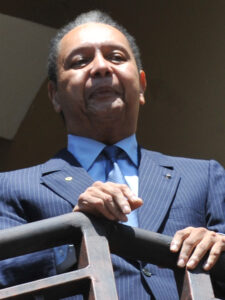 By all accounts, the nation of Haiti has devolved to depths unseen since the Haitian Revolution of 1791. After the assassination of President Jovenel Moise in 2021, gangs took over the island nation’s capital, Port-au-Prince, leaving the country’s 11 million people in terror. Through the decades, Haitians have experienced various types of governments. Let’s take a few moments to examine some of them.
By all accounts, the nation of Haiti has devolved to depths unseen since the Haitian Revolution of 1791. After the assassination of President Jovenel Moise in 2021, gangs took over the island nation’s capital, Port-au-Prince, leaving the country’s 11 million people in terror. Through the decades, Haitians have experienced various types of governments. Let’s take a few moments to examine some of them.
The people of Haiti achieved independence from their French enslavers in 1804. Afterward, they experienced their government under the rule of a series of short-lived Emperors and Kings. From 1806 to 1811, King Henry I established himself as a constitutional monarchy, a system of government in which a monarch is the Head of State and is governed by a parliament. This is different from an absolute monarchy, a system of government ruled by a monarch who has control of the government and state.
 Between 1811 and 1957, the island nation had over 30 leaders, including U.S. military forces who occupied it from 1915 to 1934. Some of the leaders in Haiti lasted for mere days, while others were in power for years. While some led based on the principles of democracy, a system of government in which the power is vested in the people and free elections are held, others were military leaders who used their power to exert control over others and achieve goals with or without the support of society.
Between 1811 and 1957, the island nation had over 30 leaders, including U.S. military forces who occupied it from 1915 to 1934. Some of the leaders in Haiti lasted for mere days, while others were in power for years. While some led based on the principles of democracy, a system of government in which the power is vested in the people and free elections are held, others were military leaders who used their power to exert control over others and achieve goals with or without the support of society.
The year 1957 saw the rise of the Duvalier dynasty. It began with elected President Francois Duvalier, a physician who was called “Papa Doc” by his patients. Duvalier was a corrupt leader who lined his pockets with money that should have gone to support society. To maintain power, he created a secret police known as the TonTon Macoute that terrorized citizens of Haiti, killing an estimated 30,000 people. Duvalier’s presidency was best described as a dictatorship, a form of government in which a single person or political entity controls political authority.
After Papa Doc died in 1971, his 19-year-old son Jean-Claude Duvalier, or “Baby Doc,” became president. The U.S. continued to have a significant interest in Haiti in part because of the Soviet Union’s relationship with Cuba. U.S. leaders liked the fact that the Duvaliers (dictators or not) were opposed to communism, an economic and political system based on the government’s ownership and regulation of all the production and distribution of goods and services. Unfortunately, like his father, Baby Doc continued to use the TonTon Macoute to harm people and the nation’s treasury as a personal checking account. In 1986 the Haitian people rose up and drove Baby Doc and his family out of Haiti. They fled to the south of France on a plane supplied by the U.S. Air Force.
 Since the ouster of Baby Doc, Haiti has continued to cycle through democracy, military coups, and foreign occupation. Additionally, Haiti experienced a devastating magnitude 7.1 earthquake in 2010, which killed over 300,000 people. In 2011, Baby Doc made a surprise return to Haiti after 25 years in exile, saying he wanted to help the nation recover from the earthquake. He was promptly arrested on embezzlement and corruption charges, but the judge in the case ruled that the statute of limitations had expired. Baby Doc died in 2014 from a heart attack suffered after being bitten by a tarantula.
Since the ouster of Baby Doc, Haiti has continued to cycle through democracy, military coups, and foreign occupation. Additionally, Haiti experienced a devastating magnitude 7.1 earthquake in 2010, which killed over 300,000 people. In 2011, Baby Doc made a surprise return to Haiti after 25 years in exile, saying he wanted to help the nation recover from the earthquake. He was promptly arrested on embezzlement and corruption charges, but the judge in the case ruled that the statute of limitations had expired. Baby Doc died in 2014 from a heart attack suffered after being bitten by a tarantula.
 The assassination of President Moise in July 2021 was followed by a 7.2 magnitude earthquake in August that same year that killed over 2,000 and displaced millions. In February 2024, former President Moise’s widow and presidential aids were indicted for his murder. Moise’s death contributed to a power vacuum in Haiti that has been filled by an estimated 200 gangs, the most powerful of which control 95 percent of Port-au-Prince.
The assassination of President Moise in July 2021 was followed by a 7.2 magnitude earthquake in August that same year that killed over 2,000 and displaced millions. In February 2024, former President Moise’s widow and presidential aids were indicted for his murder. Moise’s death contributed to a power vacuum in Haiti that has been filled by an estimated 200 gangs, the most powerful of which control 95 percent of Port-au-Prince.
On March 12, 2024, acting Prime Minister Ariel Henry announced his resignation. At this point, the world is unsure what to do or how to help Haiti. Some Haitians want foreign intervention, but many others don’t. The only thing that appears certain is that Haiti is a nation on the brink of collapse.
Thompson is a co-owner of UITAC Publishing. UITAC’s mission is to provide high-quality, affordable, and socially responsible online course materials.
Images used in this blog:
- “Location of Haiti in the Caribbean Sea“ by Hogweard is licensed under CC BY-SA 3.0. This image has not been altered.
- “Flag of Haiti (1807–1849)” by Samhanin is licensed under CC BY 4.0. This image has not been altered.
- “Fleeing Duvaliers” is licensed under CC0 1.0. This image has not been altered.
- “Baby Doc” by Marcello Casal Jr/ABr is licensed under CC BY 3.0. This image has not been altered.




